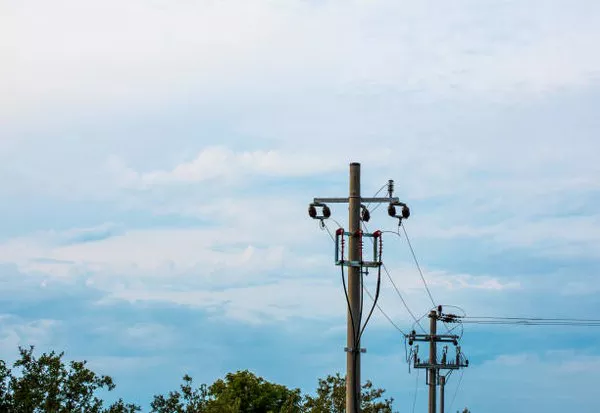Flyback transformers are an integral component of many electronic devices, playing a pivotal role in power conversion, voltage regulation, and isolation. These transformers are commonly found in applications ranging from power supplies and television monitors to uninterruptible power supplies (UPS) and electric vehicle charging stations. In this article, we will delve into the intricacies of flyback transformers, exploring their working principles, applications, and advantages.
Principle of Operation:
A flyback transformer, also known as a coupled-inductor or line-output transformer, is a type of transformer that stores energy in its magnetic field during the on-time of a switching cycle and releases it to the output during the off-time. This operating principle is key to its ability to efficiently convert input voltage levels to desired output levels, while also providing isolation between the input and output circuits.
At its core, a flyback transformer operates on the basis of energy storage in the transformer’s core during the “on” period of a switching cycle. During this time, the primary winding is energized, causing energy to be stored in the transformer’s magnetic field. When the switching element turns off, the magnetic field collapses, inducing a voltage in the secondary winding. This induced voltage can be higher or lower than the input voltage, depending on the turns ratio of the windings. This voltage transformation, along with the inherent isolation provided by the transformer, makes flyback transformers suitable for various applications.
Applications:
1. Switch Mode Power Supplies (SMPS):
One of the most common applications of flyback transformers is in switch mode power supplies. These power supplies are widely used in electronic devices such as laptops, mobile phone chargers, and LED lighting. The flyback transformer’s ability to efficiently step up or step down voltages, combined with its isolation properties, makes it an ideal choice for these power conversion applications.
2. Television Monitors:
CRT (Cathode Ray Tube) televisions and monitors use flyback transformers to generate the high voltages required to accelerate electrons and create the images on the screen. The flyback transformer steps up the voltage from the horizontal deflection circuit to generate the high voltage needed for the electron gun.
3. Uninterruptible Power Supplies (UPS):
UPS systems provide backup power during electrical grid failures. Flyback transformers are often used in the charging circuit of the UPS battery. They step up the input voltage to a level suitable for charging the battery and also provide isolation between the input AC line and the battery circuit.
4. Electric Vehicle Charging Stations:
Electric vehicles rely on high-voltage batteries, and their charging stations require transformers to step down the grid voltage to a suitable charging voltage. Flyback transformers can play a role in this voltage conversion process, ensuring efficient and safe charging.
Advantages:
1. Efficiency: Flyback transformers are designed for high efficiency, particularly in low-to-medium power applications. This efficiency stems from the transformer’s ability to store energy during the on-time of the switching cycle and release it during the off-time, minimizing energy losses.
2. Voltage Regulation: By controlling the turns ratio between the primary and secondary windings, flyback transformers can step up or step down voltages, allowing for voltage regulation and adaptation to various device requirements.
3. Isolation: Isolation between the primary and secondary windings is a significant advantage of flyback transformers. This isolation enhances safety by preventing direct electrical contact between input and output circuits, reducing the risk of electrical shock and circuit interference.
4. Compact Design: The flyback transformer’s design lends itself to compact and lightweight solutions, making it suitable for applications where space is at a premium.
5. Cost-Effectiveness: Flyback transformers can be manufactured at a relatively lower cost compared to some other transformer configurations, making them an economical choice for various applications.
Challenges:
While flyback transformers offer several advantages, they also present some challenges that need to be addressed during their design and implementation:
1. Voltage Stress: Flyback transformers experience voltage stress during the off-time of the switching cycle. This stress can lead to insulation breakdown if not properly managed, potentially causing failures and safety hazards.
2. High Turns Ratio: In applications requiring a high turns ratio between the primary and secondary windings, the flyback transformer’s efficiency can be compromised. Careful design is necessary to minimize energy losses.
3. EMI and Noise: The switching action of flyback transformers can generate electromagnetic interference (EMI) and noise. Effective filtering and shielding are essential to ensure the proper functioning of surrounding circuits.
4. Diode Stress: The secondary diode used to rectify the output voltage can experience high voltage spikes during the transformer’s off-time. This stress can impact the diode’s reliability and lifespan.
In conclusion
flyback transformers are versatile components that play a crucial role in power conversion and voltage regulation across a wide range of electronic devices and applications. Their ability to efficiently transform voltages while providing isolation makes them indispensable in modern electronics. However, their design and implementation require careful consideration of factors such as voltage stress, turns ratio, and electromagnetic interference. As technology continues to advance, the role of flyback transformers is likely to evolve, driving innovations in efficiency, reliability, and compactness.

